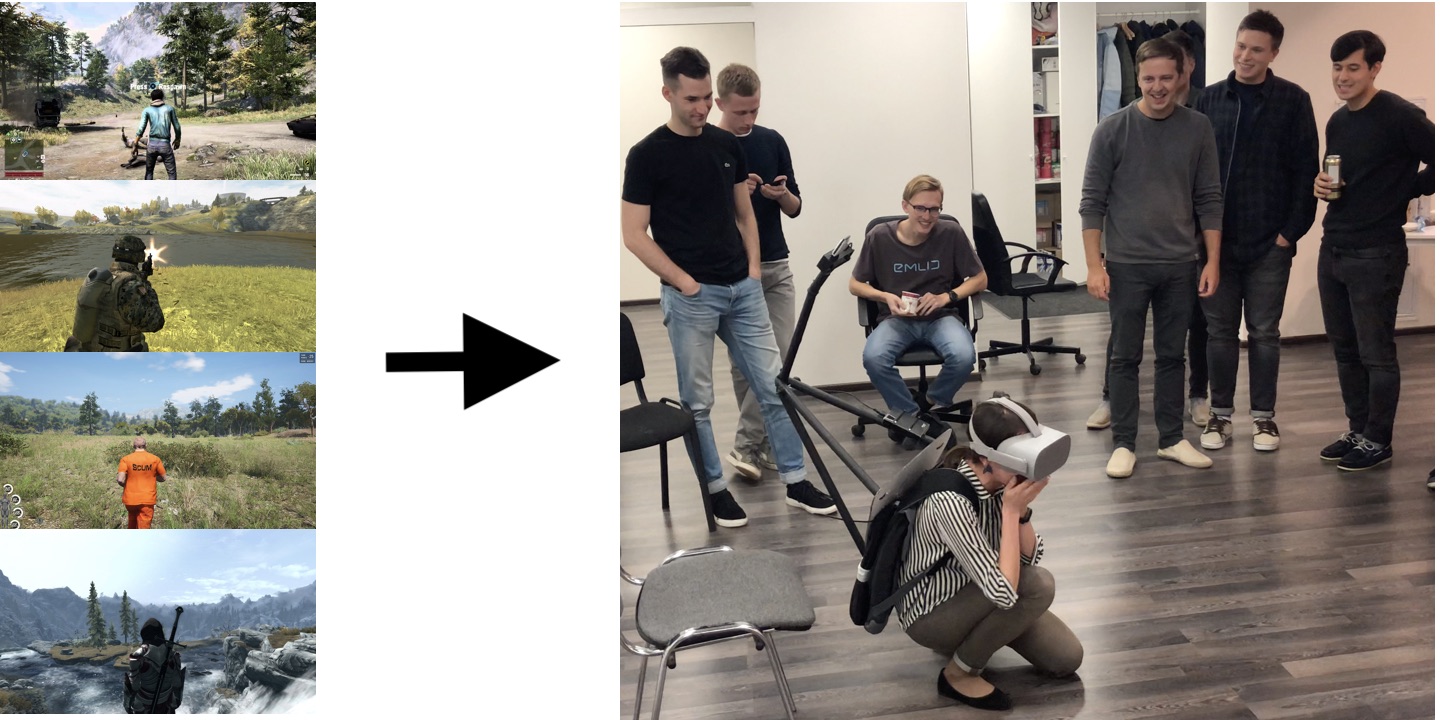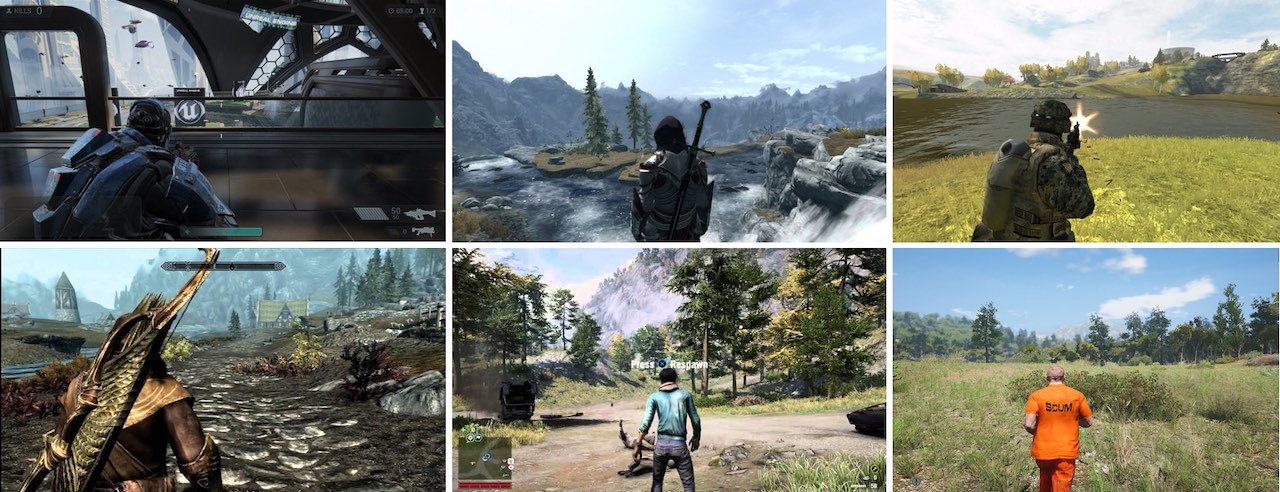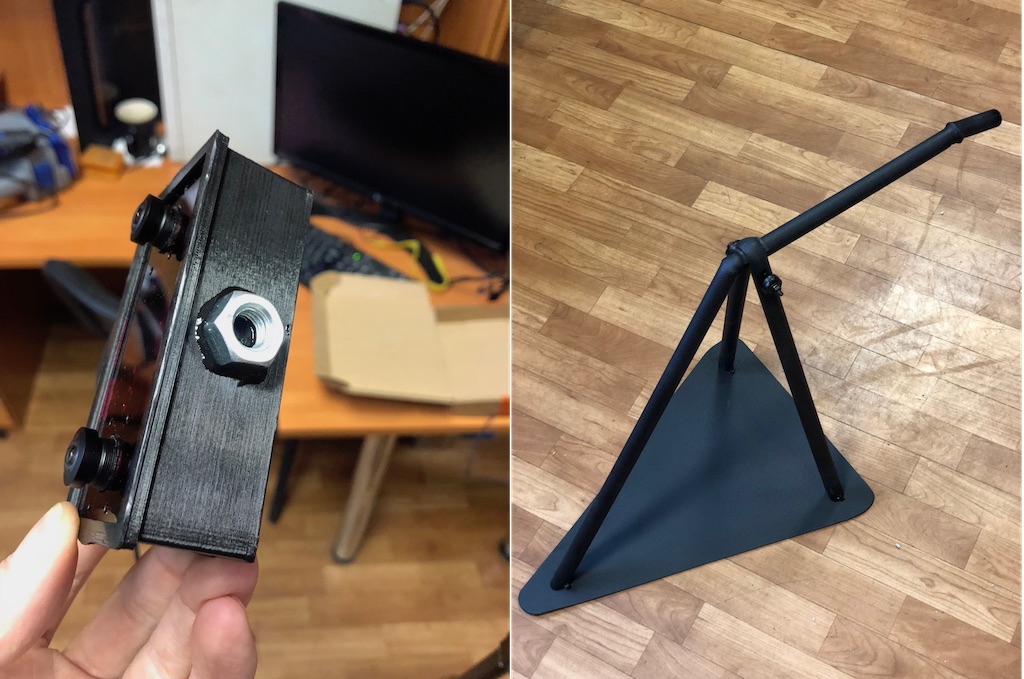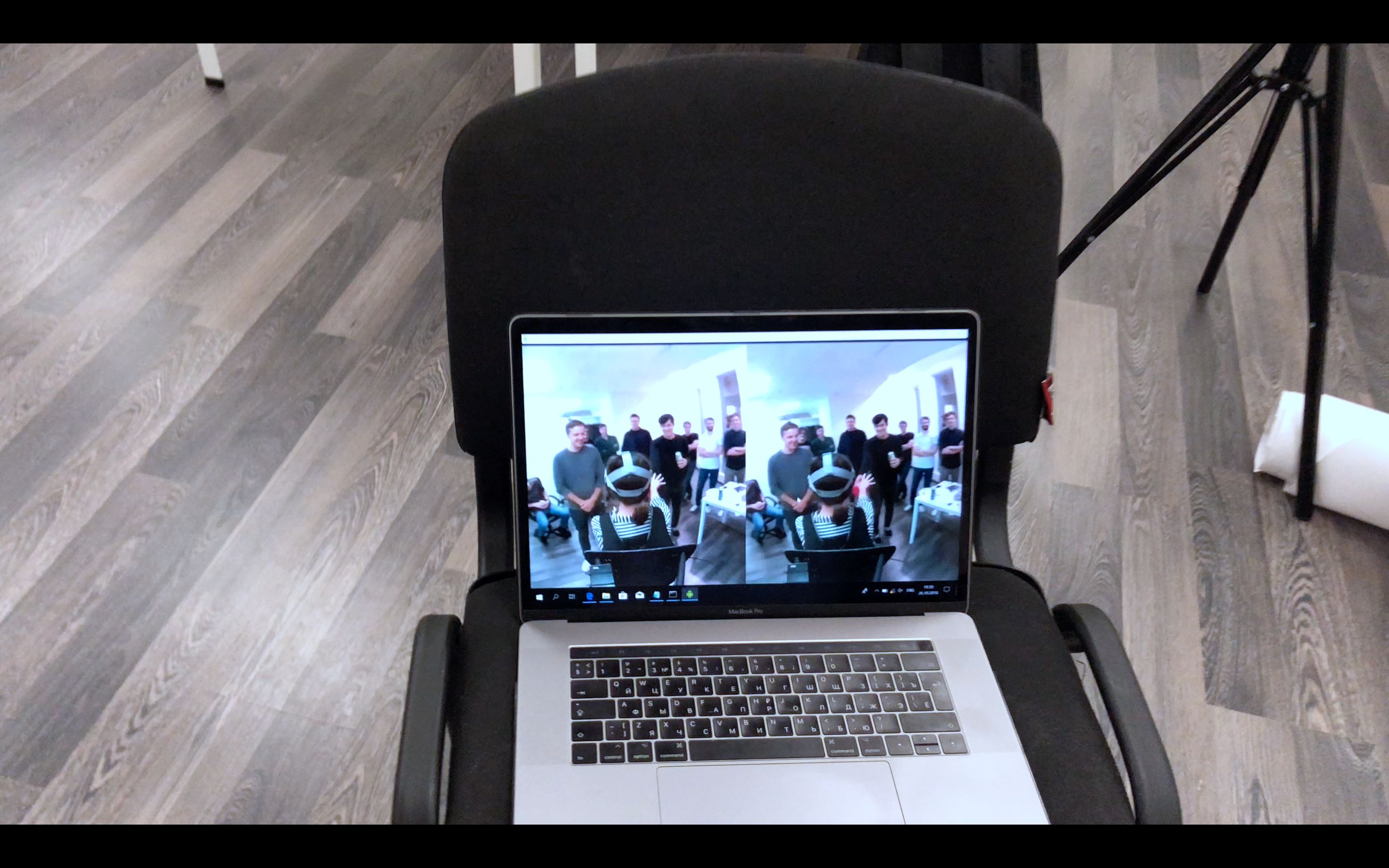You're in third-person 3D: Oculus Go + Raspberry Pi

KDPV
In many computer toys there is a view from the 3rd person. The camera is located behind the top and you see either the entire hero or its upper part. In games, we quickly get used to this mode and calmly create our own gaming affairs. The brain perfectly understands that this is just a picture on the screen, and does not consider it necessary to pull the vestibular apparatus for nothing.
And we decided to slightly troll our brain:
- Give the picture in 3D, let it be a little dive
- remove mice, joysticks and all that - just we rule with your body
- the camera is fixed to the back-top on the back and moves with the man
I decided to tell about the results of this fun experiment today.

Examples of third-person views in computer toys
Iron
The stereo camera came out of two wide-angle cameras for raspberries (Waveshare G), StereoPi and Raspberry Pi Compute Module 3 boards. For a compact package, the case was printed on a 3D printer and a camera was attached on a laser cutter.

Bottom glued epoxy nut as otvetku for mounting on a tripod. Also, a simple design was made to place the camera at the right angle (PVC pipes, triangular base - polystyrene foam). The nobility of the design was given by painting with liquid rubber from an “anti-gravel” can.

The device in the case with a nut under the tripod and fasteners on the back
Soft
Soft for this venture sawed Serega Gol , first trying on a tooth coding under Oculus Go. As a result, the simplest solution turned out to be to make an ordinary Android application, and shove it into Oculus Go in developer mode. The application tries to find a stereo camera in LAN and, if it finds one, then automatically starts to show a picture from it. Of course, there are still some nuances for finishing (such as support for the joystick and other trifles), but for the current test there was enough of such an implementation.
In order to be able to observe the picture also around, and not just the person in Oculus, a laptop displaying the video was connected to the same network. It used scrcpy utility , throwing the connection of the oculus from the USB cord to the network.
As a result, others could see such a stereo pair:

On board the raspberry running our application. As part of the video, it takes the captured stereo image from raspivid and sends it on the air. Along the way, performs many service functions such as auto-detection on the network and pick up settings through the admin area.
Short video from the test:
Findings:
- It's fun. Really fun.
- Our brain is a great power. A few tens of seconds - and we already feel quite well in another reality.
- The first seconds of people need to insure against falls. Not all adaptation is equally easy and fast.
